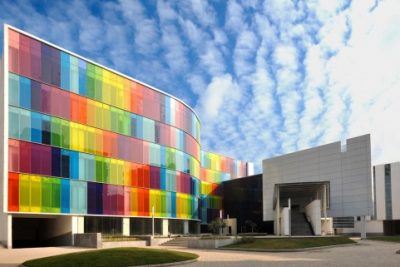The major difference between the high-income and low-income economies lies in the extent to which the country is industrialized. The economies have transitioned from low income to high income by undergoing industrialization, reducing their dependence on agriculture and natural resources and thereby showcasing a globally attractive market for investments. And by using the term ‘industrialization’, it means the advancing manufacturing of goods and services and making sure that it contributes to the highest percentage of the GDP.

India, which is often referred as an emerging economy could be the prospect market to be referred to as a high-income or a developed economy.
On one hand, India seems to make a continuous charge in demand for services like Information Technology (IT) solutions, consultancies, Business Process Outsourcing (BPOs) over the last two decades. The contribution of services in the Indian Economy is has increased to 57% in 2013, showing a decent figure comparable to that of the developed nations like Japan, Korea, United States, China. But on the other hand, the concern lies in the stagnated contribution of the manufacturing sector to the Indian Economy over the same last two decades and is as low as 15%. This figure is not even half of that of the above mentioned nations.

To attend to this highly major issue, the Prime Minister of Indian under the new government launched the Make in India initiative in the second half of 2014 with a belief that pushing up the manufacturing sector generates high scale economic growth and higher standards of living.
The main objectives of the campaign are:
·Fostering innovation – through technology advancements, Research & Development
·Enhancement of the skills of the youth – Introduction of Ministry of Skill Development, vocational training in various courses.
·Turn India into an Investment hub – ease of investment, creating awareness on investments, attract FDIs.
·Building a world class manufacturing infrastructure – across 25 listed sectors, smart cities
·Efficient protection and use of resources – agricultural and natural resources, human resources, government funds.
·Changing the conventional attitude – expand business lines, less risk aversion
What can we look forward to?
Foreign Direct Investments:
The two year old initiative (announced in August 2014, implemented from September 2014) has already witnessed a dramatic increase in the FDI inflows into the country with a whopping figure of USD 61.58 billion accounting to 46% increase in the FDIs after its launch.
Several developed economies like China, Japan, South Korea, Singapore, Mauritius, Malaysia and USA showcased a positive intention to invest in India in different projects over different sectors listed under the Make in India initiative with Industrial, Infrastructure, Automobiles and Powers sectors topping the list. This could be termed as a leap in strengthening India’s foreign collaborations.
In order to foster more hope and ease in these investment opportunities, the government has liberalized the FDI policy. The specified rail infrastructure projects now allow 100% FDIs and the FDI cap in Defence is now made 49% from 26% thus making India, a vibrant market to invest in.
This is also a remarkable success in terms of the increased employment, improved quality of living and skill development which happen to be some of the key objectives of the initiative.
Domestic expansion of manufacturing sector:
The leading business groups of the country like the TATA, Reliance, Birla, ITC who have already established themselves for over decades now and earned irrevocable trust, show from their different business lines like TATA Motors, Reliance Petroleum, that they have always been natural supporters of the manufacturing sector. They carry a global brand in portraying the nation on the world economy map. Apart from these big names, other domestic companies that are leaders in innovation, cost leadership and advanced technologies are in the process of turning into global players as a part of Make in India. Thus the Make in India initiative acts like a red carpet to these companies to promote manufacturing to such a level that it marks significance to the country’s macroeconomic factors.
Subsequent enhancement of- these macroeconomic factors attracts the domestic investors marking a bull market. Not just that, the Foreign Portfolio Investment (FPI) sees an upward graph.
To facilitate this, the new government has taken several sub initiatives. Labour Sector laws that acted as a major impediment previously are made flexible now, processes for applying for industrial license(IL) and Industrial Entrepreneur Memorandum (IEM) are made available 24*7, a separate ministry has been established for Skill Development and Entrepreneurship, Environment and Forest clearances submissions could be made online, are a few to mention.
But the major challenge lies in how the companies display dynamism, flexibility and up gradation in the risk intensive global environment of changing economies, technologies, skill – requirement gap.
Increase in Indian Exports:
Since June 2016, India’s exports have risen, major contributing export items being Pharmaceuticals, Chemicals, Petroleum products and Engineering goods, all of them falling under the listed sectors of Make in India project.
However the increase seems to be minute due to the India’s ailing infrastructure in the form of roads, railways and ports, which is a stumbling block in facilitating efficient exports. Another argument says that the world trade has weakened as the economies like China, European Union, UK are slowing recovering from their economic crashes and this shows that this demand is not guaranteed to long last.
Conclusion
From a global perspective, Make in India is a decent initiative in order to push India in the high-income economy category because of its increased growth and advancements in manufacturing sector, FDIs, higher demand for Indian exports.
But considering the Indian scenario, the initiative projects a bigger picture with hopes and opportunities. The growth in services sector cannot alone compensate for the low paced GDP rise over past years. Therefore the services sector has to be well complemented by the manufacturing sector to witness a steep sustainable increase in GDP, overcome trade deficit with ample of employment and investment opportunities.
However, inadequate infrastructure, skill requirement, Investment unawareness and the conventional mind-set of risk aversion continue to stand tall as the challenges in successful evolution of Make in India.




